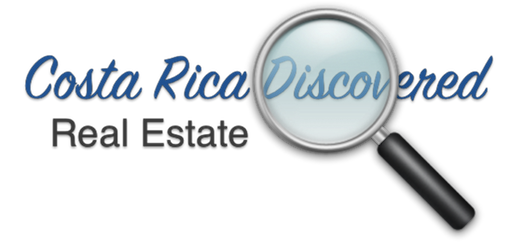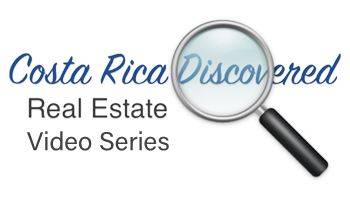Leave a Comment
Posted on September 2, 2019
by Herb DeMars

Starting today, anyone with a legal entity needs to register its beneficial owners with the Central Directo (Direct Central in English) of the Banco Central (Central Bank). / A.M. Costa Rica wire services photo.
By Garland M. Baker
Exclusive to A.M. Costa RicaBy Garland M. Baker
Exclusive to A.M. Costa RicaYesterday started a new era in Costa Rica, a new time when all privacy using an anonymous corporation was no more.
In the good old days, a company, called a sociedad anonima, an anonymous society in English, S.A. for short, protected investors. Laws in the past allowed them to remain secret. The concept goes as far back as the 15th and 16th centuries to promote investment in transatlantic exploration. The term later became synonymous with a corporation, a limited liability company and the like.
Law 9416, enacted Dec. 14, 2016, was designed to quash privacy for legal entities formed to protect secret investors, the exact opposite of the original spirit of the practice. The Costa Rican government asserts it will only use the information harvested to find tax cheats, drug dealers and terrorist suspects. Everyone knows there is no system that cannot be hacked, leaving the information gathered at risk, especially in a country where important secrets quickly find their way to the front page of local newspapers.
That said, starting today, anyone with a legal entity needs to register its beneficial owners with the Central Directo (Direct Central in English) of the Banco Central (Central Bank). Last month’s article* explained the details of the law and how to get a firma digital, a digital signature supervised by the Central Bank of Costa Rica.
The registration may prove to be a nightmare and expensive for expats who are not Spanish speakers or do not hold one of the forms of legal residency.
Today, this article outlines how to access the system and how to register for Law 9416. A person who wants to go through the process without the aid of an attorney or accountant must be either the president of the entity, a manager with full power of attorney or have had a local notary register him or her with Central Directo as a registrant. They will need the following things and patience:
1- A good working knowledge of the Spanish language,
2- A digital signature smart card and reader,
3- A computer, and
4- A connection to the internet.
Here is the step-by-step process to access Central Directo. The person registering must first qualify him or herself with the system. Do not attempt this without a good understanding of the Spanish language. There is no option for English menus or guidance.
Step 1- Install the firma digital software on a computer: Many banks issue the smart card containing the information for the digital signature, but a software program must be installed on a computer for it to work. This software is obtained on the SoporteFirmaDigital.com* website. Windows, MAC and various Linux versions are supported. To download the software one must provide a smart card serial number located on the back of the card in the lower right-hand corner below the signature box. This installation also installs the Firmador BCCR, the Central Bank of Costa Rica signer software. This is a necessary component to use Central Directo at the Banco Central.
Step 2- Restart computer: After installing the digital signature and BCCR signer software, it is a good idea to reboot the machine so the digital certificates load correctly. A person who has an older version of the digital signature software installed should uninstall it and install the new version as outlined in Step 1.
Step 3- Input identification number into Central Directo: Insert the digital signature card into its reader and log in into Central Directo*. A window will pop up requiring a Costa Rican citizenship identification card number called a cédula de identidad or a foreign identification card number, called a DIMEX.
Step 4- Input authentication token and digital signature pin: Once the identification information is authenticated in Step 3, two windows will open, one in the center of the screen and the other in the lower right-hand corner. The window in the middle will display a token code. That code needs to be copied into the top box of the lower window along with the digital signature pin in the lower box.
Step 5- Select service: If the information in Step 4 is accepted, three options will appear. Select the second option “En una entidad suscrita donde está registrado(a) como usuario,” (entity where one is registered as a user) or the third option “En otra entidad jurídica,” (in another entity).
Step 6- Input and verify contact information: A phone number, preferably one that can receive a text message for codes, and an email address are required. The email will be verified by sending an email to the address with a code for verification. This process will happen twice, once for the company and another for the person. They both will go through the email verification process.
Step 7- Sign the terms and conditions agreement: Once the contact information is competed and verified, the user will be presented with a terms and conditions page. It must be signed using the digital signature card as in Step 4.
Completing the above steps will bring a person to a page where there are two options, “Servicios Financieros,” (financial services) and “Registro de Transparencia y Beneficiarios Finales” (transparency and final beneficiaries register), select this one.
Congratulations! Reaching the final page is where Law 9416 information is to be kept. There is a 41-page manual* to learn how to register an entity, and it can be accessed without logging into the system. It is a slideshow all Spanish.
The filing deadline is based on the last digit of an entity’s cédula number as follows: 0 & 1, September; 2 & 3 October; 4 & 5 November; 6 & 7 December; 8 & 9 January 2020.
What a windfall for Costa Rican notaries! They get to charge people to write special powers of attorney in their notary registration books, file the powers with Central Directo and register their clients with the system. Prices for this work are all over the place, but a study of the market indicates $300 to $1,000 is the range notaries charge to do registrations. The lower price is about right, and the higher one is ridiculous.
This is good information to know because many people who need to file could not get through the 41-page course because they do not have the time, knowledge, know the Spanish language, or just do not have the forbearance and may have to pay to get their report filed. It will be expensive for those owning more than one company.
As stated in previous articles about Law 9416, this is a humongous project the government is taking on. It will be very interesting to see the statistics in the coming months to see how successful the venture is for the country.
——————
Editor’s note: Garland M. Baker is a 47-year resident and naturalized citizen of Costa Rica. His team solves problems for expats. Reach him at info@crexpertise.net. Baker has undertaken the research leading to his articles with A.M. Costa Rica. Find the collection at crexpertise.info. A free reprint is available at the end of each piece.

